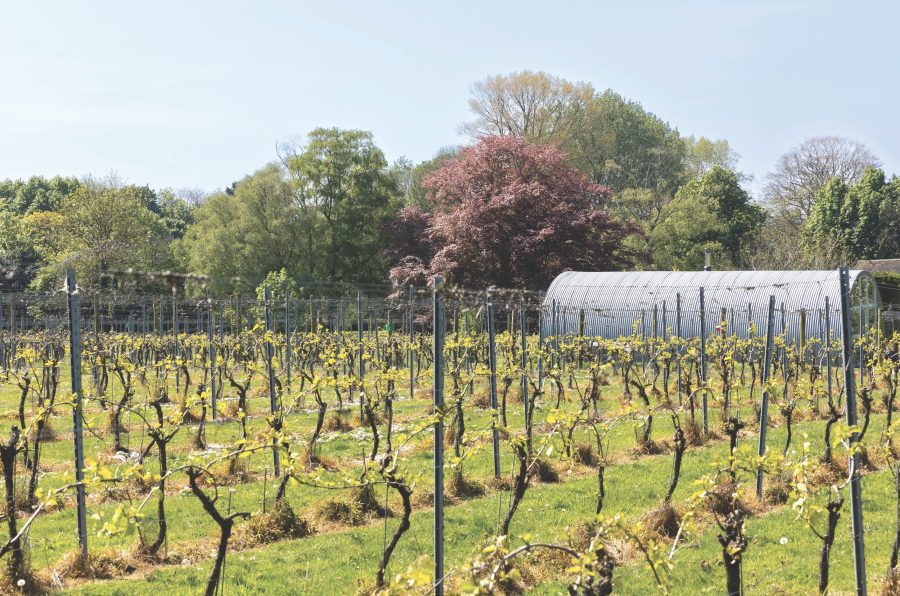Rebecca Farner, Editor of Vineyard magazine, visits a small vineyard in the Garden of England.
The last ten miles of the drive to Brabourne Vineyard in Kent provided views of apple orchards, hop gardens, strawberries and of course vines.
This journey built certain expectations and on arrival, witnessing the beauty of the vines mingled with the backdrop of the Grade II listed Court Lodge, my first thought was that this is a small but perfectly formed vineyard. The two acres of vines are planted on a gently sloping site at the foot of the North Downs and have therefore all the benefits associated with this chalk seam that runs right through to Surrey.
Planted in 2014 the vines are predominantly Pinot Noir with 10 rows of Chardonnay. This allows Brabourne vineyard to really focus on the grapes grown on this small plot and the versatility of the Pinot Noir grape gives them plenty of scope to make still and sparkling wines both white and rosé.
Paul and Hester Fenwick and their three children live on the eight acre site of Court Lodge in the village of East Brabourne. Having previously been located in Sweden and then Switzerland they returned to the UK and looked for the perfect place to settle.
It is easy to see how this site captured their heart. The couple were looking for a use for the land whilst Paul was working full time. “He would listen to farming today as part of his daily commute, which led to all sorts of suggestions, I think there might have even been snail farming,” said Hester with a laugh.
It was vines however that ended up ticking all the boxes and Paul and Hester sought the help of a consultant.
ON COURSE FOR A VINEYARD
Simon Day was willing to help the couple with the initial setup of the vineyard and Paul took an intensive course at Plumpton. James Dodson of VineWorks planted the vines and installed the trellis. After initially planning on training the vines on the Scott Henry system they found that this system would not be appropriate for their site, as it did not allow enough airflow.
“Airflow on this site is vital to control mildew,” Hester explained. “We originally had 4 canes per vine but after advice from Megan and Tim at Hutchinsons, we have moved to a two cane system in a curved pattern to control vigour,” she continued.
Paul and Hester are also very happy to have the help of Felicity Head who has been helping with pruning and other tasks in the vineyard. Hester emphasises how much she values the hard work that Felicity has undertaken.When talking about pests and predators Hester explained: “We have a bird scarer that plays predator hunting calls but we have more problems from badgers, especially along the margins where the hedges are.”
However, the vines are trained slightly higher than is usual and this has proved quite useful as it means that the badgers are only able to reach the low hanging bunches. “We can literally tell how tall the badgers are,” joked Hester.
Brabourne is mentioned in the Doomsday Book and the current house can be dated back to the 1700’s but probably sits on the site of a much older building.
“It is a site that has over 1000 years of history,” said Hester. The nearby church dates from 1200 and has an original stained-glass window, one of the oldest surviving windows from this era.
This window is the inspiration for the logo of Bradbourne. It has an elegant simplicity that is both appealing and is also a visual representation of the values of the business.The window has a note at the bottom that it was restored in1851 and this also is a reflection of the life cycle of the site.
This article extract was taken from the September 2024 edition of The Country Smallholder. Buy the full issue here.
To receive regular copies of The Country Smallholder magazine featuring more articles like this, subscribe here.
For FREE updates from the world of smallholding, sign up for The Country Smallholder newsletter here.








